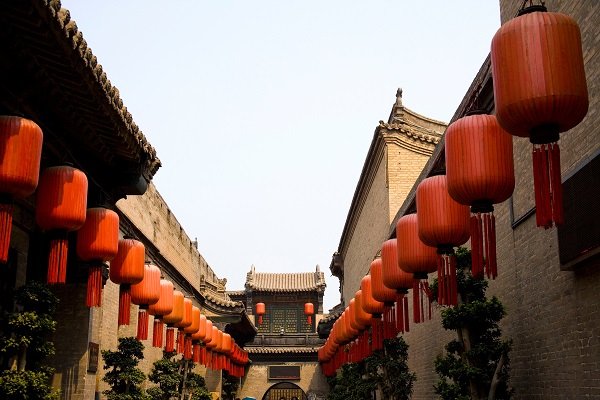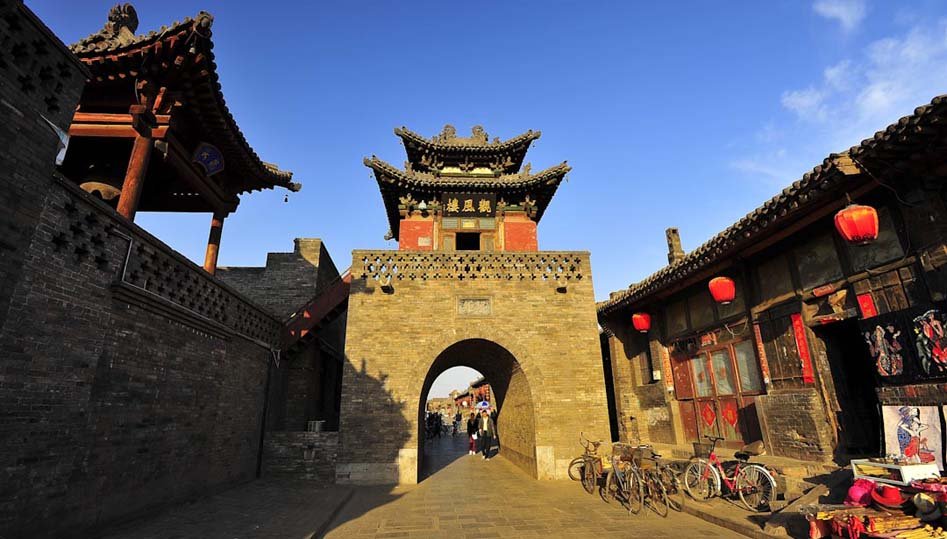

The Qiao Family Courtyard in Pingyao was the setting for the movie Raise the Red Lantern
One of the most composed and sublimely beautiful films to have come out of China is Raise the Red Lantern (1991), hailed by IMDb as one of the “25 movies you must see before you die”. For a quintessentially Chinese location, director Zhang Yimou picked Pingyao, a turtle-shaped, walled city of nearly 4,000 wonderfully preserved original Ming (1368-1644) and Qing Dynasty (1644-1911) buildings.
Almost the entire town consists of traditional cobbled streets dividing classically-styled courtyard homes, making it easy to picture Pingyao during its heyday as one of China’s premier banking centers. Money is the raison d’être of the 2,800 year-old city. Pingyao originally rose to fame as a trading center on the route along which the teas and silks of southern China were transported to Russia and beyond. Bustling trade prompted caravans of camels and mules carting great crates of bronze coins, an inconvenient security problem for the province’s famous financiers. Eventually one of the more enterprising devised a virtual payment system involving pieces of paper known as “drafts”. And with the opening of the Sunrise Prosperity Draft Bank (Rishengchang in Chinese) on Pingyao’s main street in 1823, the clearing process was born in China. Soon there were 22 draft banks, more than half the national total, with branches all over the country and overseas.

Pingyao's traditional cobbled streets and city gates are a major draw
Thus an already successful, fortified city built on trade metamorphosed into a spectacularly prosperous regional and national financial hub. Founded upon traditional Chinese principles the city centered on the City Tower with four main streets radiating outward in the four directions to the four-mile city wall. The positioning of its six gates — one in the north, one in the south, two each on the east and west walls – gave rise to Pingyao’s nickname “turtle city”.
More than 350 miles southwest of Beijing, Pingyao was probably too remote in recent times to succumb to the wrecking ball and modernizing China’s penchant for sleek skyscrapers. Its historic structures were cherished rather than obliterated – strict planning regulations came into force such that new buildings must conform to old techniques. Now a UNESCO World Heritage site, Pingyao is helping today’s China rediscover the value of preserving its ancient buildings – not least because there is so much money to be made.
Read more about Pingyao and its neighbouring attraction in Shanxi here.